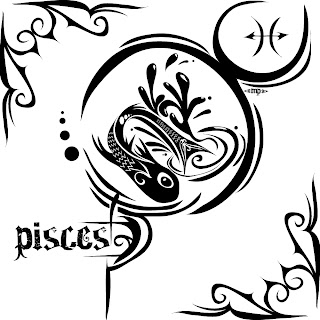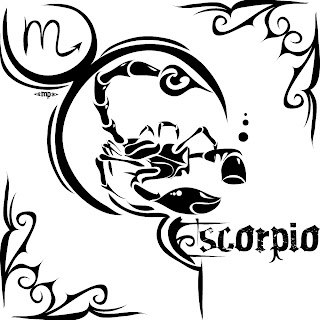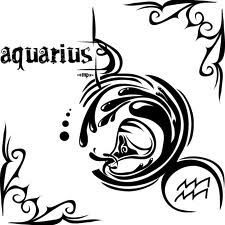Saturday, 30 October 2010
HereAfter by Clint Eastwood
Stories are like collective dreams. This is one of the few movies in recent years that deals with the idea of life after death. It seems once a decade some film maker finally makes a movie with the theme of life after death. Each of those movies has offered us a unique vision of that afterlife. Do you remember the movie, What Dreams May Come? Or Ghost?
The opening scene of HereAfter is horrific in its reality, and all throughout the movie, Clint Eastwood somehow creates an atmosphere of 'reality' that contrasts with the uncertainty of the 'other world'. It's a sharp yet subtle contrast.
HereAfter is not a movie that coddles you. Its characters are annoying, heart-breaking and frustrating at times, just like real people. It is a story of how we can reject a spiritual gift by not knowing how to work with it. But also because other people are afraid of it and how it ends up isolating us from life.
The whole topic of death is so often ignored in Western culture, mainly because we split life from death and stepped out of the Wheel of the Year and nature's cycles. The idea that there is a life after death is so obvious to me - look at the trees and plants; look at the moon; look at the circle of the year. The natural cycles of life say there is gestation, birth, growth, maturity, decline and death. Which is always followed by rebirth!
So have hope in what comes after. It will make us less fearful here on Earth.
HereAfter is well worth seeing, although I don't think you'll put it at the top of your favorites list.
HereAfter by Clint Eastwood
Stories are like collective dreams. This is one of the few movies in recent years that deals with the idea of life after death. It seems once a decade some film maker finally makes a movie with the theme of life after death. Each of those movies has offered us a unique vision of that afterlife. Do you remember the movie, What Dreams May Come? Or Ghost?
The opening scene of HereAfter is horrific in its reality, and all throughout the movie, Clint Eastwood somehow creates an atmosphere of 'reality' that contrasts with the uncertainty of the 'other world'. It's a sharp yet subtle contrast.
HereAfter is not a movie that coddles you. Its characters are annoying, heart-breaking and frustrating at times, just like real people. It is a story of how we can reject a spiritual gift by not knowing how to work with it. But also because other people are afraid of it and how it ends up isolating us from life.
The whole topic of death is so often ignored in Western culture, mainly because we split life from death and stepped out of the Wheel of the Year and nature's cycles. The idea that there is a life after death is so obvious to me - look at the trees and plants; look at the moon; look at the circle of the year. The natural cycles of life say there is gestation, birth, growth, maturity, decline and death. Which is always followed by rebirth!
So have hope in what comes after. It will make us less fearful here on Earth.
HereAfter is well worth seeing, although I don't think you'll put it at the top of your favorites list.
Western Painting - Body Painting - A Contemporary Yet Ancient Style of Being a Canvas
Friday, 29 October 2010
Dreams and Healing
Dreams and Healing
Thursday, 28 October 2010
Dream Lore: What Ancient People Knew
There was also the Pharaoh's dream about seven fat and seven lean kine (or cows) that Joseph interpreted as seven years of plenty and then seven years of famine. His interpretation won him the Pharaoh's pleasure and a position of power over the land of Egypt. And if you know your Bible, you'll remember that it was a dream that got Joseph sold into slavery in the first place.
This Blog will help clarify the importance of working with our dreams.
Dream Lore: What Ancient People Knew
There was also the Pharaoh's dream about seven fat and seven lean kine (or cows) that Joseph interpreted as seven years of plenty and then seven years of famine. His interpretation won him the Pharaoh's pleasure and a position of power over the land of Egypt. And if you know your Bible, you'll remember that it was a dream that got Joseph sold into slavery in the first place.
This Blog will help clarify the importance of working with our dreams.
The Chilean Miners Broke The Record For The Longest Stay Underground! What Did They Win?

They also received $10,000, new iPods from Steve Jobs himself, an offer to tour the islands of Greece, and an invitation to a soccer game between Madrid and Manchester United!
Zodiac Symbols " Piscess Scorpio Aquarius " Tattoos



Wednesday, 27 October 2010
Time Traveler Caught On Film
Monday, 25 October 2010
Sunday, 24 October 2010
Zodiac Constellations Symbols Ideas





Body Painting - A Look at the Top 6 Festivals in the World
This festival includes some of the most stunning professional body painting to be seen in the world today. A 3 day program includes dance, music and fireworks displays, as well as many competitions. Many of the body paintings here should fall under the category of 'fine art' with some of the dancers body paintings simply defying belief. A very large event and certainly worth traveling for.
Where: Seeboden, Austria
Duration: Three days
This is another body painting festival that showcases simply stunning artists and finished work. The quality of the art here is similar to that seen at the World Body Painting Festival. The Festival is themed from year to year, with the recent theme being "It's A Jungle Out There." Also includes the Canadian Body Painting Championships.Where: Nanaimo, British Columbia
Duration: Two days
Events Include: Competitions in overall body painting, brush and sponge, and airbrush; includes the Canadian body painting ChampionshipsArtistic Range: Most stunning, and one of the best overall. Very life-like and fantastic double-take images. Family Friendliness: Not stated - would be worth making a call first.
Saturday, 23 October 2010
What Google Define?

My favorite Google feature is Google Dictionary. Whenever I need a word defined, I just type it into the search box and the meaning pops right up. It’s really convenient, but sometimes the definitions can be strange. For example, here are some words I looked up recently on Google Dictionary.
Yahoo: A stupid Web site for stupid people who only want crap.
Ask: A crap site for idiots.
Bing: Just a bunch of crap.
Monopoly: A term that idiots like to throw around to sound smart at parties, but really they don’t know what the hell they’re talking about.
Information: A thing that Google makes instantly accessible to anyone for free. And that makes them the enemy? Explain that logic to me.
Charity: A thing that Google gives to.
Environment: A thing that Google gives to.
Barack Obama: A cool guy who uses Google.
Lady Gaga: A cool lady who uses Google.
Privacy: An overrated thing that people should maybe chill out about.
Relax: A thing that some people should learn how to do, especially journalists.
Victim: A nice company that gets attacked all the time for no reason.
Jesus Christ: A guy who made people’s lives much easier and then was crucified. Sound familiar?
Books: Something people can read online for free now.
Thank You: A thing it wouldn’t kill people to say.
Computer: A thing for using Google.









